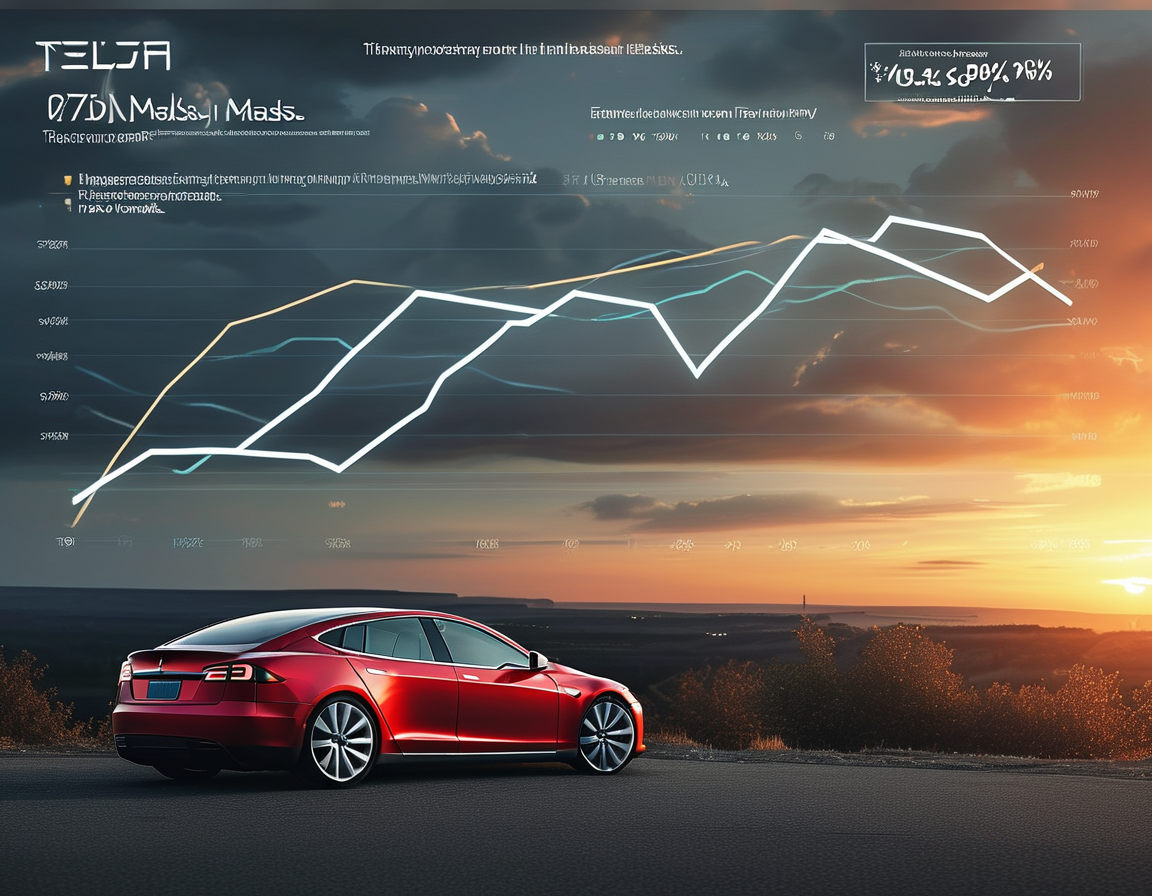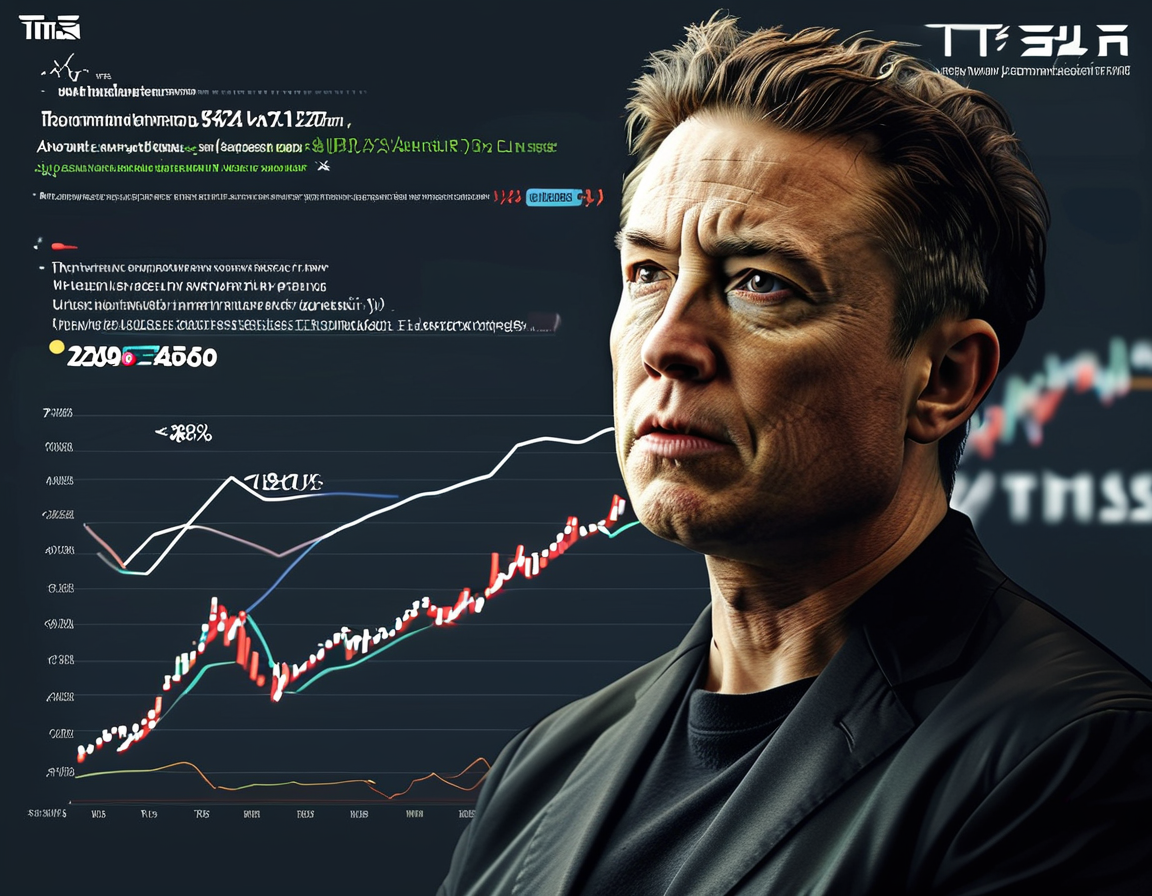On April 9, 2025, Tesla’s stock (TSLA) faced a significant drop, tumbling by 2.5%. This decline erased a staggering $4.4 billion of Elon Musk’s personal wealth in one day. As reported by Yahoo Finance, this is just the latest chapter in a punishing year for Musk, who has seen his net worth shrink by a dramatic $134 billion since January. With the stock down 38% year-to-date, the question looms large: can Musk navigate Tesla back to its earlier heights, or is his empire beginning to show serious cracks?
Let’s contextualize this latest drop. The stock closed at $218.79, a far cry from its prior high of $488.54. Musk’s connection with Tesla shares directly affects his fortune, with the Bloomberg Billionaires Index noting his net worth at approximately $297.8 billion. Though still the world’s richest person, his lead has narrowed significantly. The $4.4 billion loss is part of a broader trend from 2025, marked by trade disruptions and Tesla’s inconsistent performance.

Musk speaks out amidst this stock turbulence. He pointed to ‘market panic’ and criticized short-sellers betting against Tesla’s long-term vision. Despite his optimistic outlook, the concerns seem more profound than just the market’s current mood. Analysts highlight Tesla’s deep reliance on its Shanghai Gigafactory, a critical node in its supply chain. As U.S.-China trade tensions heighten, this facility faces trials that threaten production and delivery.
What led to this downward trend? The reasons appear multifaceted and intertwined. First, global trade disruptions are impacting Tesla’s performance. The Shanghai factory, a linchpin in its operations, has suffered from tariffs and political upheaval. Beijing’s 125% tariffs on U.S. imports, along with Trump’s imposition of steep duties on Chinese products, are squeezing Tesla’s cost margins. Production delays are now commonplace, with a notable 13% fall in first-quarter deliveries marking the worst showing in nearly three years.
Then we have brand backlash coupled with a sales slump. Musk’s political affiliation with the Trump administration has turned off many environmentally conscious buyers, Tesla’s core demographic. Protests against Musk’s affiliations have erupted, particularly in Europe. In Norway, known as a past stronghold for Tesla, sales have plummeted. It’s challenging to navigate a market where once-loyal customers are now disenchanted.

Next in line are valuation concerns that leave investors scratching their heads. Tesla stands with a forward price-to-earnings (P/E) ratio that is daunting—over nine times the average of conventional automakers and quadruple that of competitors like BYD. Some investors argue that current stock levels are hard to justify, particularly as delivery forecasts seem increasingly conservative.
Musk’s divided focus raises eyebrows as well. His ambitious projects across SpaceX, X, and Neuralink suggest a full plate. Investors worry that Musk’s attention may be scattered, especially as competition heats up in the EV market. His public remarks only seem to fuel these worries, as witnessed in his clashes with political figures on the nuances of trade.
Despite these challenges, Musk remains committed to his vision. On X, he framed the short-term losses as mere distractions, reaffirming his belief in the long-term prospects for Tesla. His hint at constructing a new gigafactory in the U.S. signals a strategic pivot that may help in mitigating trade risks. Alongside future models like the refreshed Model Y and an affordable $25,000 EV called ‘Redwood,’ Musk sees opportunity lurking amidst the turmoil.

However, history has shown us that such timelines can be ambitious at best. Take the Cybertruck, for instance—it has faced delays and a price hike that shocked consumers. Investors are left wondering if the Redwood or the full self-driving (FSD) technology can meet expectations. Will these innovations arrive on time and stay within budget?
The discussions on X around Tesla bring to light a polarized sentiment. Some users laud Musk’s resilience and seize the stock dip as an opportunity. Others find themselves skeptical. Cries of ‘unprecedented brand damage’ intermingle with tales of falling used car prices. The potential for further delivery shortages looms over Tesla, with the market showing signs of resistance.
Analysts, too, are divided in their assessments. Some are optimistic about a ‘major 2025-26 product cycle’ that could reignite growth. Conversely, others foresee persistent downturns unless the political landscape shifts or trade wars subside. The future for Tesla remains uncertain, and caution prevails among many investors.
Looking ahead, what is the outlook for Tesla? The road forward is tied to Musk’s leadership, adaptability, and the ability to navigate unfolding challenges. In the short term (2025-2026), more volatility is expected. Trade tensions and reputational damage could stifle sales, with stock dipping possibly to the $150-180 range.
Yet, a new gigafactory or successful product refreshes could help stabilize the company image. In the medium term (2027-2030), Tesla could find strength in its tech advancements. If Musk delivers on the anticipated affordable EV and autonomous vehicles, the growth narrative could revive.
Still, risks are in plain sight. Trade wars might continue to sap profit margins. Musk’s controversial positioning could further alienate customers. Execution delays on new products only add to the complexity. As the market saturates with competitors, Tesla may struggle unless it finds innovative pricing solutions. Meanwhile, positive catalysts such as new vehicles or breakthroughs in autonomy could shift the tide.
In conclusion, Tesla’s future is a delicate dance of ambition, risk, and opportunity. Elon Musk stands at a crossroads, and the decisions he makes now could echo through the industry for years to come. The alignment of external factors, innovations, and market sentiments will shape the narrative that unfolds.
Leave a Comment